Rockwell
In 1907 and proposed by F H Flugge and J C Warren, Rockwell Hall was built as an Agricultural Hall and also used as a schoolroom. The hall was officially opened by Wesley Maley, the Local Member of Parliament, on November 20th 1907, and became the social centre of the community being utilised for dances (Red Cross Ball), concerts, wedding receptions, churches, polling booth, school, and meetings (tennis and cricket clubs), other various bodies including the Farmers and Settlers Association. Tennis courts and a cricket pitch were also on the site and used by the locals. Cricket started in 1909 on ground just north of the hall
ROCKWELL AGRICULTURAL HALL
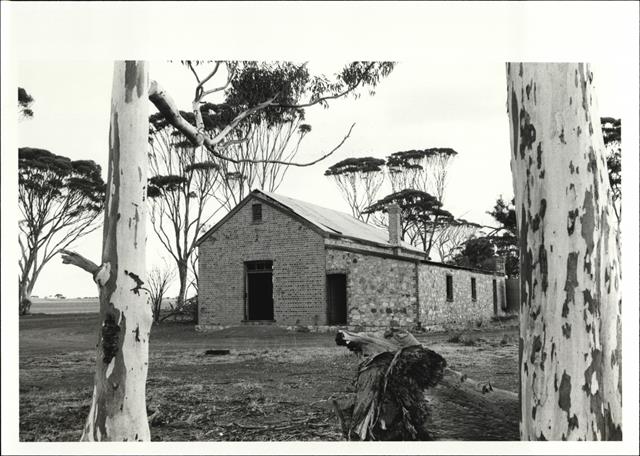
Rockwell Hall – 4 May 1982
(From inHerit website – Photo credit: F.A. Sharr)
Rockwell Agricultural Hall,
OPENING CELEBRATION.
Great Southern Herald
23 November, 1907
The new public ball at Rockwell, some 20 mile eastward of Katanning, was opened with appropriate ceremony on Wednesday afternoon in presence of a large gathering of residents and visitors.
The hall is substantially built of brick with jarrah floor and iron roof; the dimensions being 40ft. x 20ft., with 12ft. walls, and a substantial dais at the western end.
Hon. Wesley Maley, at request the of the president Mr. F. H. Flugge, undertook the pleasant duty of declaring the hall open for public purposes. He said he was glad to assist at the opening of the furthest east hall in the Katanning district, and hoped that this requirement of civilisation would be followed by the still greater one of a railway. The people of the district had shown enterprise and would find corresponding benefits from the possession of such a commodious hall. In addition to its uses for public meetings it would no doubt serve for purposes of recreation and as a centre of the social and public life of the people.
Almost immediately after his arrival in this state 25 years ago he had met Mr. Graham, whose north-east run then included the site on which the hall stood. It was gratifying to see that the recent growth of settlement had so altered and developed that part of the country.
Refreshments were then served in admirable style by the ladies of the district. Tables were afterwards cleared away for the concert to which the following were the contributors: Miss Crommelin, overture and song; Master Campbell Warren and his brother and sisters, duet; Messrs. J. C. Warren and P. Skinner, songs; Mesdames Banko and Warren, Messrs. Warren, Flugge, Webb and others, recitals; little Miss Mills, Mr. Flugge and others; and gramophone selections, Mr. Clifford Banko. The accompanists were Mrs. Warren Misses Crommelin and Flugge.
Mr. F. H. Flugge, who presided, briefly thanked all who had taken part in the erection and opening of the hall, especially mentioning Mr. Kleeman (contractor), Mr. J. C. Warren (secretary), Mr. Simper and others.
The secretary, Mr. J. C. Warren, said the chairman had omitted the best of all their workers and that was the chairman himself. He also read a letter from Hon. F. H. Piesse explaining that he was detained by Parliamentary duties and expressing best wishes for the success of the committee in charge of the hall. Apologies for absence were also sent by Rev. Dr. Parish and Rev. John Smith.
Mr. Warren went on to give a few figures with regard to the expenditure. The committee had received in donations (mostly from their own neighbourhood) £73 and a Government grant of £140 They had spent £37 10s and paid the contractor £177 16s 6d, and the total liability was under £4. Thanks to their chairman and his family, the hall had been plastered internally as a free gift. The committee would now have only to provide cost of seating, piano, and other necessary furniture.
The opening celebrations wound up with a most enjoyable dance in which most of the residents and many visitors took part.
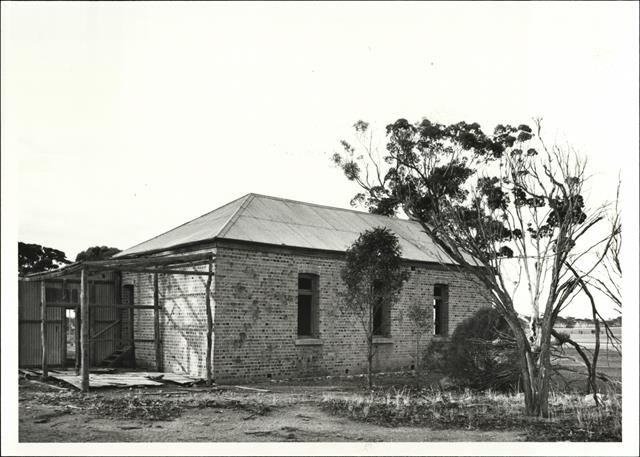
Rockwell Hall – 4 May 1982
(From inHerit website – Photo credit: F.A. Sharr)
Rockwell Honor Board
UNVEILING CEREMONY.
Great Southern Herald
13 August 1919 (p3)
On Sunday afternoon last the ceremony of unveiling the Rockwell Honor Board was held in the Rockwell Agricultural Hall, when, notwithstanding extremely unfavourable weather conditions, there was a large number of interested spectators present, including Mr. A. Thomson, M.L.A., and many others from Katanning.
Mr. R. W. A. Warren, president of the Rockwell Branch, F. and S. Association, in a brief speech welcomed the visitors to Rockwell and referred to the event that had occasioned the gathering. He said the board had been erected by the members of the Branch, who had decided that the names of all men who had enlisted from the district and had worn the King’s uniform for at least three weeks, were to be included; and of the 52 names appearing on the Board, 15 had paid the supreme sacrifice.
In conclusion Mr. Warren said he would ask Mrs. A. Bain, whose four brothers had been on active service, to unveil the Honor Roll. The Revs. W. Cowley and H. Moore conducted a short service, and Canon Burbidge gave an address prior to the unveiling, which was perform ed by Mrs. Bain amidst cheers and the singing of the National Anthem.
The musical portion of the service was rendered by the choir, and Mrs. Flugge and Mr. Clegg who sang. Mr. C. Gray, the secretary of the R.S.A., replied on behalf of the men.
The Board, which is an extremely artistic piece of work, was executed by Mr. E. A. Rogers of Katanning, from West Australian timbers, carved to represent a tablet with draperies caught back on either side, showing the names on brass plates in the centre.
Badgebup-Rockwell Pasture Improvement Group
Badgebup-Rockwell Field Day
EXCELLENT ENTRIES IN COMPETITIONS
Great Southern Herald
29 October, 1954
The Badgebup-Rockwell Pasture Improvement Group held its first field day on the property of Mr S. L. Kemble on Monday, October 18. Owing to adverse seasonal conditions, and the lack of finishing rains, little or no green clover was seen at the time of judging. There were 25 entries for the competition which was most gratifying considering the dryness of the pastures.
The winner of the best first year stand of sub-clover was S. L. Kemble, who gained 86 points out of a possible 100. The entry was of Early Dwalganup sub-clover and was sown with a small seed box in a crop of barley. The seed had germinated well and a good even stand of fairly well-developed sub-clover resulted. At the time of judging, a good rain was required for satisfactory seed setting. Second place in the competition went to W. Longmire with 82 points.
The winner of the best second year clover was W. G. Blackall with a total of 92 points. Six entries were judged for this section and the clover was particularly good in most cases. The winning entry was a very uniform, still green, stand of clover having made very good growth. It was favoured in that it was sown in a valley. It was the best clover seen during the judging. Second place in the section went to S. L. Kemble with 86 points.
There were four entries in the Best-Balanced Pasture section and the winner was B. Tree with 80 points. The clover had not grown as well on the old established pastures as the second-year clover. Most entries were very weedy and besides sub-clover, silver grass, geranium, cape weed, and brome grasses were seen. The winning entry was fairly productive and had been grazed heavily. The clover had been sown three years ago, with a crop, at 2 lbs per acre. The runner-up in this entry was E. Clegg and Sons with 78 points.
The best Leguminous Crop section attracted two entries, the winner being S. L. Kemble with 86 points. The winning entry was a crop of peas with the other entry being a stand of lupins. The peas were fairly productive and uniform.
The competition for the best Cereal Hay Crop was very keenly contested and nine entries were judged. Some good crops were seen, and it was difficult to separate the best two entries. The winning entry consisted of a mixture of oats, barley and peas, of medium height and very uniform. It was entered by R. Goodchild and scored 87 points of the possible 100. S. L. Kemble took a second place with a crop of Bungulla wheat, which scored 85 points.
During the day farmers saw a demonstration of machinery given by Elder Smith and Co. Ltd. Much interest was shown in the Cliff Bunting Hay Rake and farmers were very impressed with the operation of the baler. Agricultural advisers Mr T. E. McDowell of Katanning and Mr Lionel White of Narrogin gave interesting talks on damage to pea crops and methods of prevention, Mr E. Brewis a representative of Cuming Smith and Mt Lyel Ltd, who was on a tour of the Great Southern district, presented the trophies to the various competition winners.
At the conclusion of the field day, Mr T. E. McDowell thanked Mr W. Longmire for escorting the party around the various holdings.
ROCKWELL HALL & DISTRICT
from inHerit website
In 1907 and proposed by F H Flugge and J C Warren, Rockwell Hall was built as an Agricultural Hall and also used as a schoolroom. F H Flugge and J C Warren continued to be secretary treasurer of the hall committee for 25 years.
The builder was L F Kleeman whose tender was £177/10/6. Mr Charles Elliot made the bricks in Mr Flugge’s paddock at a charge of 30/- per 1,000 with 25,000 to be made. Residents of the district carted water and firewood to the site where the bricks were made and burnt.
The hall was officially opened by Wesley Maley, the Local Member of Parliament, on November 20th 1907, and became the social centre of the community being utilised for dances (Red Cross Ball), concerts, wedding receptions, churches, polling booth, school, and meetings (tennis and cricket clubs), other various bodies including the Farmers and Settlers Association.
School
The Rockwell school opened on 27th April 1908 with Lillian Davenport as the teacher. Due to falling numbers of students by 1916 the school opened for only half the week sharing the teacher with Coblinine. The school closed on 11th May 1917 not to reopen again until 19th February 1926 under the name “Coblinine East”. It then closed for the last time in 1933. Students of the school planted sugar gum trees at the front of the hall.
Tennis courts and a cricket pitch were also on the site and used by the locals. Cricket started in 1909 on ground just north of the hall – the pitch was made with bricks left over from the building and covered with matting for each game.
West of the hall, just up the hill, was the first public building in the area, a timber and iron Presbyterian Church. There is no evidence of this remaining and is assumed to have been eaten by white ants. It is expected that other denominations conducted services in the hall.
A regiment of the Light Horse Brigade was formed there in 1917.
The stone supper room (still standing) and a corrugated iron dressing room (no longer standing) were added in 1921 and were built by the local Flugge brothers. It was opened with a lavish fancy dress party.
As far as is known only one person has died at the hall. She was Molly Longmire (nee Flugge), living at Riverside, who collapsed and died at the farewell party in 1944 which the district were throwing for her and husband Malcolm at Rockwell.
By 1940 the community had started to decline and joined with the close by Badgebup farmers. The name of Rockwell has been continued with both the CWA Branch and the Farmer’s Federation Branch. They are still known as the Badgebup Rockwell members.
Current owners Nick and Cecily Richardson have since commenced alterations to the hall for residency purposes.
Photos below were submitted to the
Lost Katanning Facebook Group
by member Wendy Kirkby
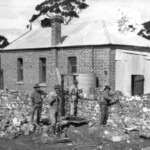
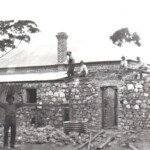
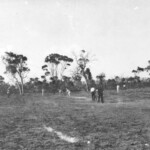
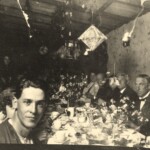
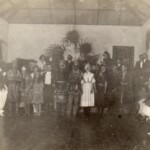
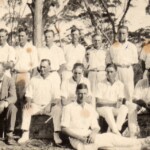
CAN YOU HELP?
Do you have any historical information or photographs about the Rockwell district that you can include on this page? Perhaps a photograph of the WW1 Honour Board? If so, I would love to hear from you. I can be contacted by email: admin@lostkatanning.au or you can submit your information HERE.




